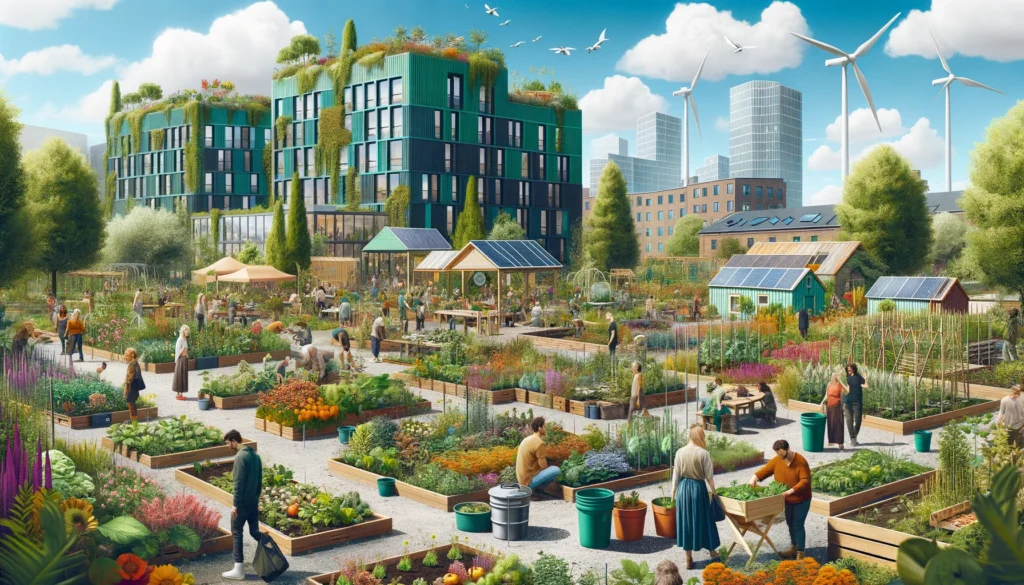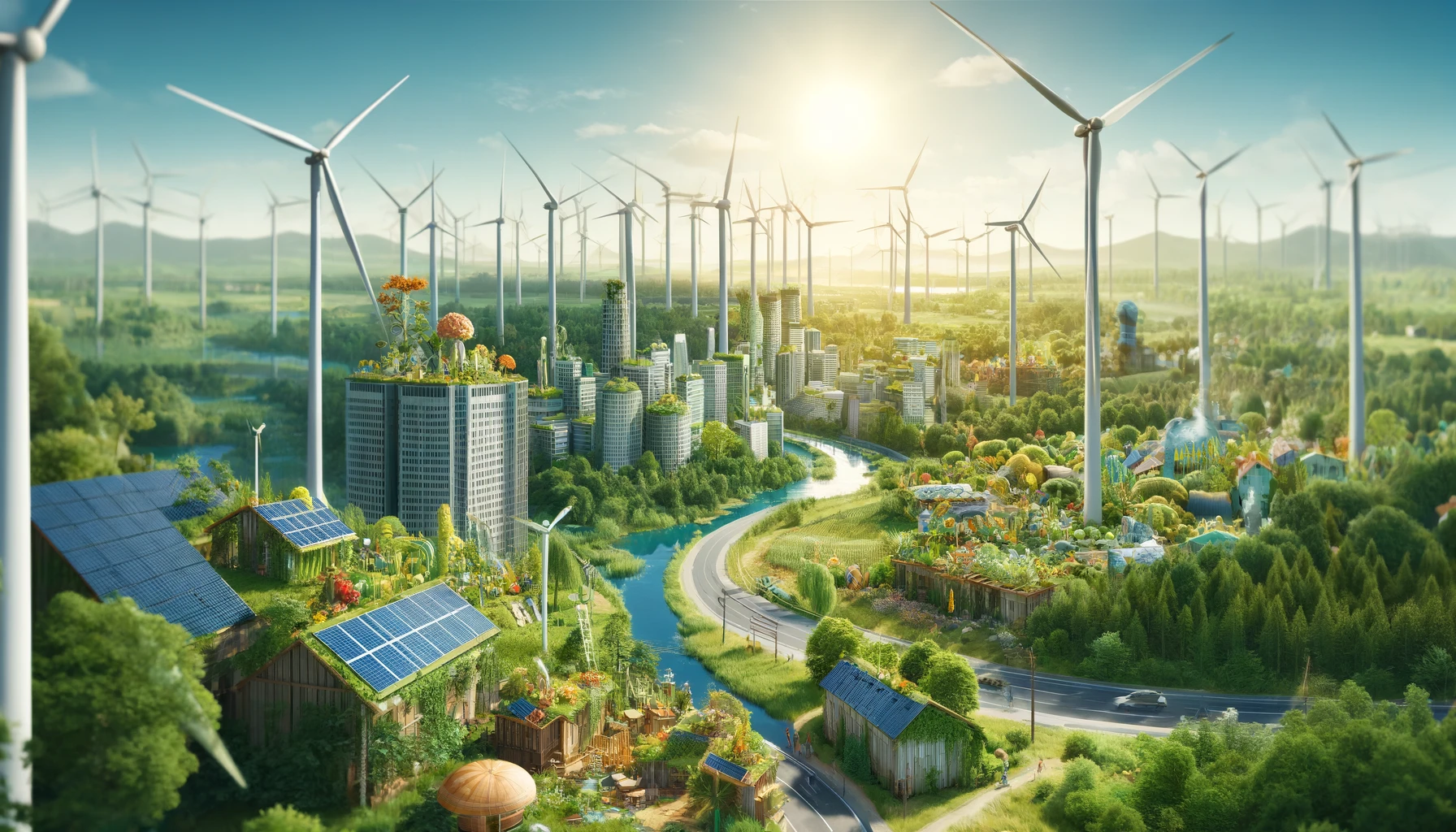In today’s rapidly evolving world, sustainability has transitioned from being a buzzword to a crucial aspect of our everyday lives. As we face the stark realities of climate change, dwindling natural resources, and environmental degradation, the need to adopt sustainable practices has never been more pressing. This comprehensive guide explores the various facets of sustainability, its importance, and practical steps we can take to build a greener future today.

Understanding Sustainability
At its core, sustainability is about meeting our present needs without compromising the ability of future generations to meet theirs. It encompasses a broad range of practices aimed at protecting the environment, promoting social equity, and ensuring economic viability. These three pillars—environmental, social, and financial sustainability—are interconnected and essential for a balanced and thriving ecosystem.
- Environmental Sustainability: This involves practices that reduce our ecological footprint, such as minimizing waste, conserving water, and reducing greenhouse gas emissions. It also includes protecting natural habitats, biodiversity, and ecosystems.
- Social Sustainability: Focuses on maintaining and improving social quality, including aspects like human rights, labor rights, and community development. It’s about creating an inclusive society where everyone has access to basic needs and opportunities.
- Economic Sustainability: Ensures that economic activities are conducted responsibly, promoting fair trade, ethical business practices, and long-term financial health. It balances growth with the responsible use of resources and social equity.
The Importance of Sustainability
Sustainability is crucial for several reasons:
- Environmental Protection: Sustainable practices help mitigate the effects of climate change, reduce pollution, and conserve natural resources, ensuring that ecosystems remain healthy and resilient.
- Economic Benefits: Sustainable businesses often enjoy cost savings through efficient resource use, waste reduction, and energy conservation. They are also better positioned to adapt to regulatory changes and market demands for green products.
- Social Well-being: By promoting social equity and community development, sustainability ensures that all members of society can lead healthy, productive lives. It fosters a sense of community and shared responsibility.
Practical Steps Towards Sustainability
Building a greener future requires collective action at all levels—from individuals to corporations to governments. Here are some practical steps we can take:
- Reduce, Reuse, Recycle: Implementing the three Rs in our daily lives can significantly reduce waste and conserve resources. Simple actions like using reusable bags, recycling household waste, and reducing single-use plastics make a big difference.
- Energy Efficiency: Adopting energy-efficient practices and technologies can reduce our carbon footprint. This includes using energy-efficient appliances, LED lighting, and supporting renewable energy sources like solar and wind power.
- Sustainable Transportation: Opting for public transportation, carpooling, biking, or walking reduces greenhouse gas emissions. Electric vehicles and hybrid cars are also great alternatives to traditional gasoline-powered vehicles.
- Water Conservation: Simple measures like fixing leaks, using water-saving fixtures, and practicing mindful water use can conserve this precious resource. Harvesting rainwater for gardening and other non-potable uses is also effective.
- Supporting Sustainable Businesses: Choosing products and services from companies that prioritize sustainability encourages more businesses to adopt green practices. Look for certifications like Fair Trade, Organic, and B Corporation when shopping.
- Advocacy and Education: Spreading awareness about sustainability and advocating for policies that support environmental protection, social equity, and economic responsibility can drive systemic change.
Case Studies: Successful Sustainability Initiatives
- IKEA’s Sustainable Sourcing: IKEA has committed to sourcing 100% of its wood, paper, and cardboard from more sustainable sources by 2020. This includes using recycled materials, ensuring that wood is FSC-certified, and promoting responsible forest management.
- Tesla’s Clean Energy Revolution: Tesla’s focus on electric vehicles and renewable energy solutions has revolutionized the automotive and energy industries. Their innovations in battery technology and solar power are driving the transition to a more sustainable energy future.
- Patagonia’s Environmental Activism: Patagonia, an outdoor clothing company, is known for its commitment to environmental sustainability. They donate 1% of sales to environmental causes, use recycled materials in their products, and advocate for policies that protect the planet.
Overcoming Challenges to Sustainability
While the benefits of sustainability are clear, implementing sustainable practices can be challenging. Common obstacles include:
- Economic Constraints: Initial investments in sustainable technologies and practices can be high. However, long-term savings and the potential for government incentives often offset these costs.
- Resistance to Change: People and organizations may be resistant to changing established habits and systems. Education and awareness campaigns can help overcome this resistance by highlighting the benefits of sustainability.
- Policy and Regulation: Inconsistent policies and lack of regulation can hinder sustainable practices. Advocacy for clear, supportive policies at local, national, and international levels is crucial.
The Future of Sustainability
The future of sustainability looks promising, with advancements in technology and increased global awareness driving progress. Innovations such as green building materials, sustainable agriculture practices, and circular economies are paving the way for a more sustainable world.
- Green Technology: Emerging technologies like artificial intelligence, blockchain, and the Internet of Things (IoT) are being leveraged to enhance sustainability. For instance, AI can optimize energy use in smart grids, while blockchain ensures transparency in supply chains.
- Sustainable Agriculture: Practices like precision farming, vertical farming, and agroforestry are improving food security while reducing environmental impacts. These methods promote efficient resource use and reduce reliance on harmful chemicals.
- Circular Economy: This economic model focuses on designing out waste and keeping products and materials in use. It promotes recycling, reusing, and refurbishing products, thereby reducing the need for new resources.
Sustainable Living Tips
Living sustainably is easier than you might think. Here are ten practical tips to help you adopt a more eco-friendly lifestyle:
- Minimize Waste: Start by reducing your waste. Compost organic waste, recycle, and avoid single-use plastics. Bring reusable bags, containers, and water bottles wherever you go.
- Energy Conservation: Use energy-efficient appliances and light bulbs. Turn off lights, appliances, and electronics when not in use. Consider investing in smart home technology to optimize energy use.
- Sustainable Diet: Eat more plant-based meals. Plant-based diets have a lower environmental impact compared to meat-based diets. Buy local, organic produce to support sustainable farming practices.
- Eco-Friendly Transportation: Walk, bike, carpool, or use public transportation. If you drive, consider an electric or hybrid vehicle. Reduce your travel carbon footprint by choosing eco-friendly travel options.
- Water Use: Save water by taking shorter showers, fixing leaks, and using water-saving fixtures. Collect rainwater for gardening and other non-potable uses.
- Green Home: Use non-toxic, eco-friendly cleaning products. Decorate with sustainable materials like bamboo, cork, or reclaimed wood. Insulate your home to reduce energy consumption.
- Support Green Businesses: Buy from companies that prioritize sustainability. Look for certifications like Fair Trade, Organic, and B Corporation. Support local businesses in reducing carbon footprints associated with transportation.
- Educate Yourself: Stay informed about environmental issues and sustainable practices. Read books, watch documentaries, and follow credible sources online.
- Get Involved: Join local environmental groups, participate in clean-up drives, and advocate for sustainable policies. Your voice and actions can make a difference.
- Mindful Consumption: Before making a purchase, ask yourself if you really need it. Choose quality over quantity. Opt for products that are durable, repairable, and recyclable.
Conclusion
Sustainability is not just a trend; it is a necessary approach to ensuring a livable future for generations to come. By understanding its importance and taking practical steps in our daily lives, we can contribute to a healthier planet. Whether it’s through individual actions, community efforts, or corporate initiatives, every step towards sustainability is a step towards building a greener future today.
Building a sustainable future is a collective effort, and by integrating these practices into our lives, we can make a significant impact. Let’s embrace sustainability and work together to create a world where both people and the planet can thrive.
